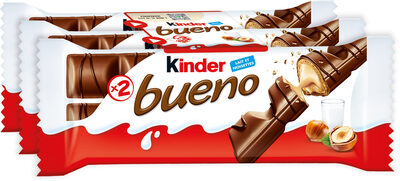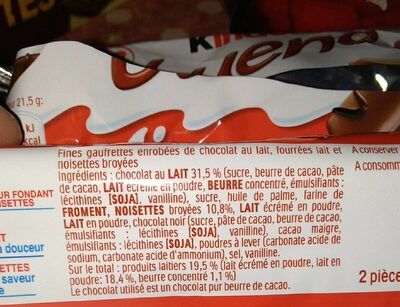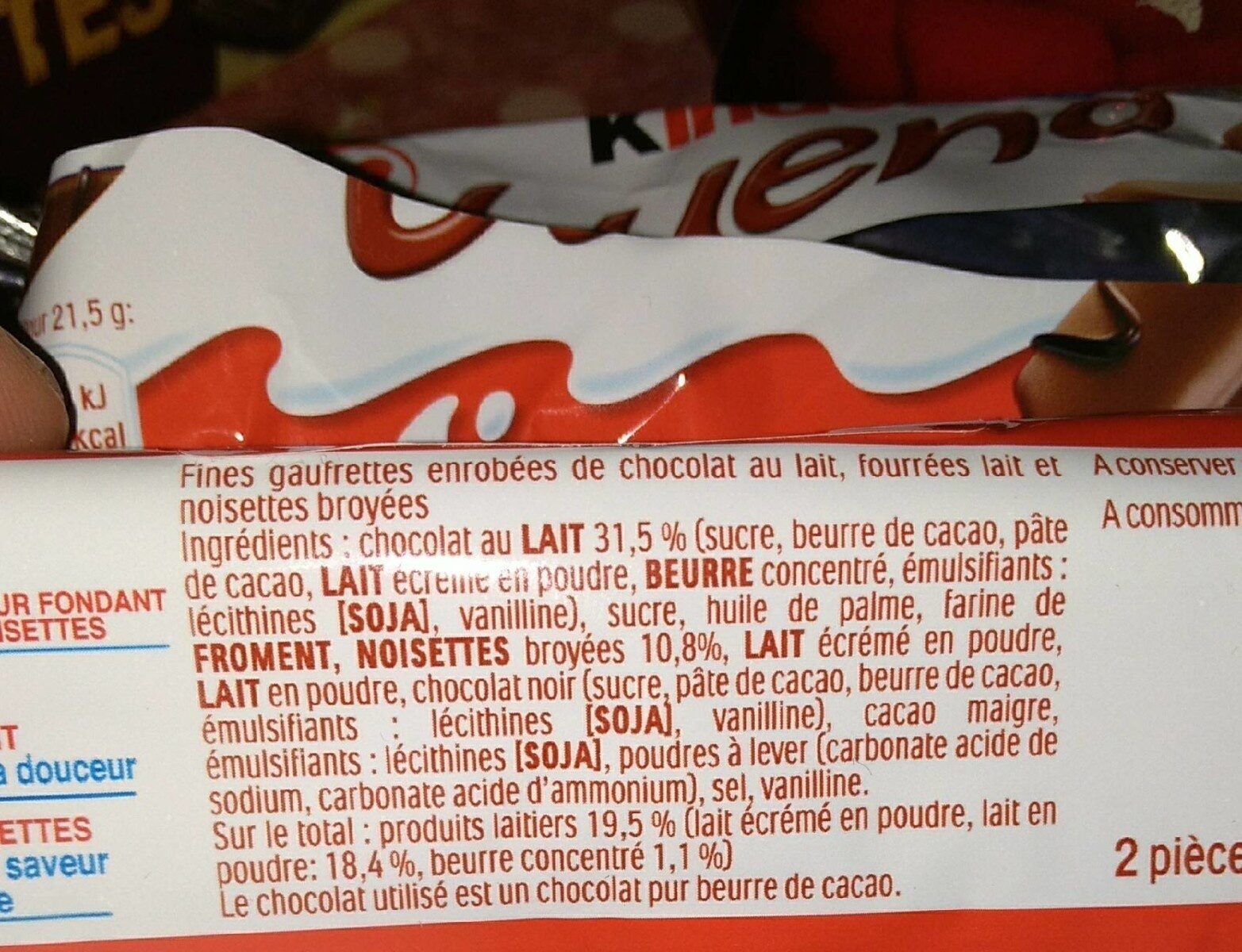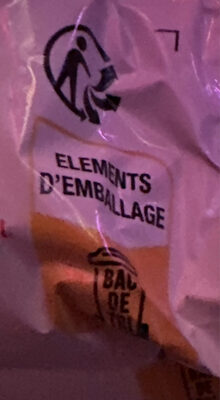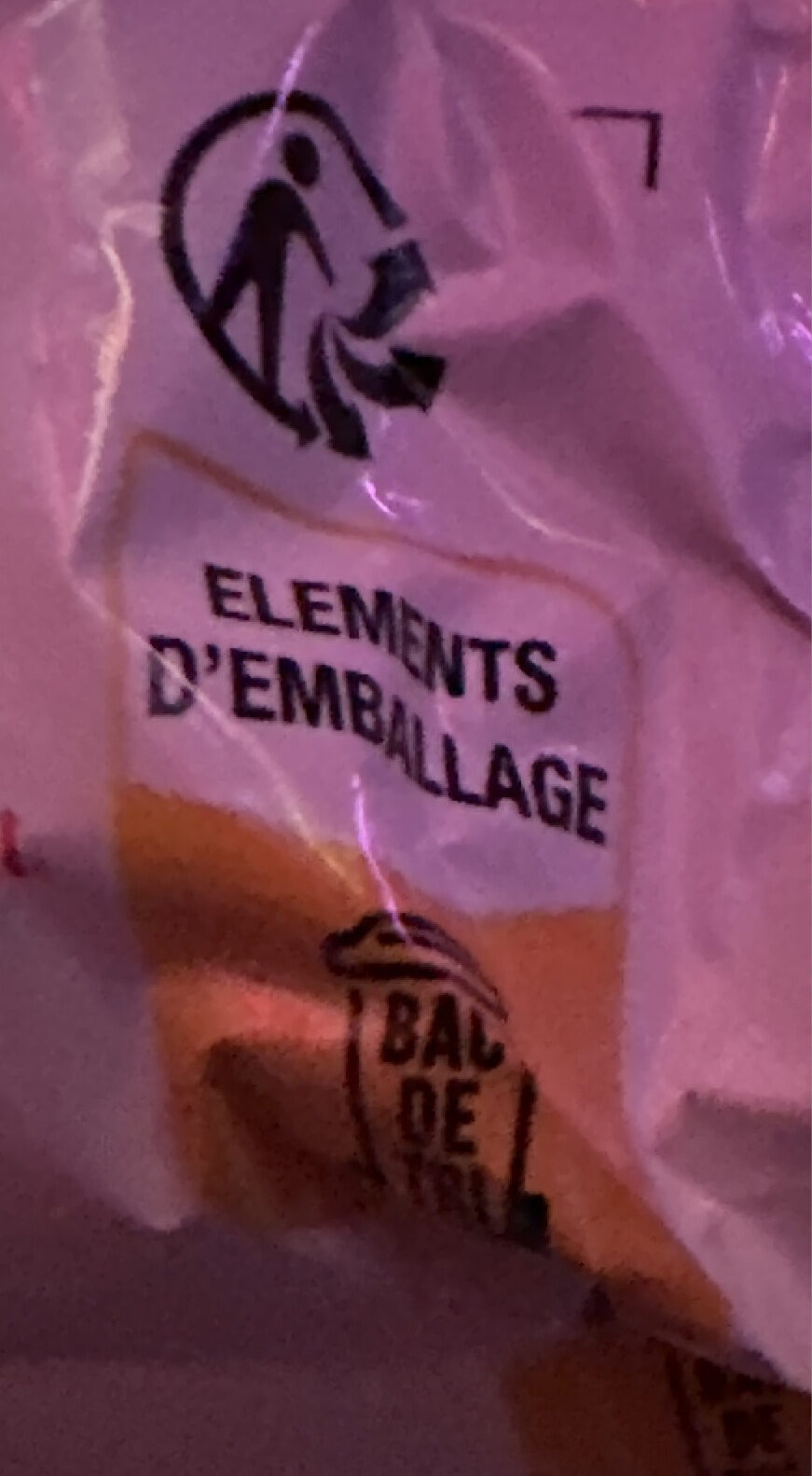Barre Chocolatée Kinder Bueno Chocolat au Lait x3 - 129g - 129 g
Aquesta pàgina del producte no està completa. Podeu ajudar a completar-la editant-la i afegint-hi més dades a partir de les fotos ja disponibles, o fent-ne més amb l'aplicació de androide o iPhone / iPad. Gràcies!
×
Algunes de les dades d’aquest producte les ha proporcionat directament el fabricant FERRERO FRANCE COMMERCIALE.
Codi de barres: 8000500025857 (EAN / EAN-13)
Nom comú: KINDER BUENO : Fines gaufrettes enrobées de chocolat au lait, fourrées lait et noisettes broyées
Quantitat: 129 g
Empaquetament: Plàstic, en:pack
Marques: Kinder
Categories: Snacks, Aperitius dolços, Cacau i derivats, Llaminadures, Barretes, Caramels de xocolata, en:bars-covered-with-chocolate, en:Chocolate nuts cookie bars
Etiquetes, certificacions, premis:
Triman
Botigues: Magasins U, carrefour.fr
Matching with your preferences
Altres dades
Condicions de conservació: A conserver au sec et à l'abri de la chaleur
Servei al client: FERRERO FRANCE COMMERCIALE - Service Consommateurs, CS 90058 - 76136 MONT SAINT AIGNAN Cedex
Report a problem
Fonts de dades
El fabricant FERRERO FRANCE COMMERCIALE utilitza Equadis per transmetre automàticament dades i fotos dels seus productes.
Producte afegit per kiliweb
Última modificació de la pàgina del producte per org-ferrero-france-commerciale.
La pàgina del producte, també editada per date-limite-app, driveoff, ferrero, franrj, g123k, inf, magasins-u, musarana, openfoodfacts-contributors, packbot, quechoisir, roboto-app, scanbot, spotter, yuka.Ukxrbkhvc0NsUGhRbE5nWHJoVFQxdXBIKzY2SWRHT1ZNOU1BSVE9PQ, yuka.WnJnY1Rva3RwOEFRby9FQnhqL1N5dEIyMVorWUJtMlVlOGdJSWc9PQ, yuka.sY2b0xO6T85zoF3NwEKvln55cd7HrxzEZz7Qgxea1sWldKTsZv9q05GmLKg.
